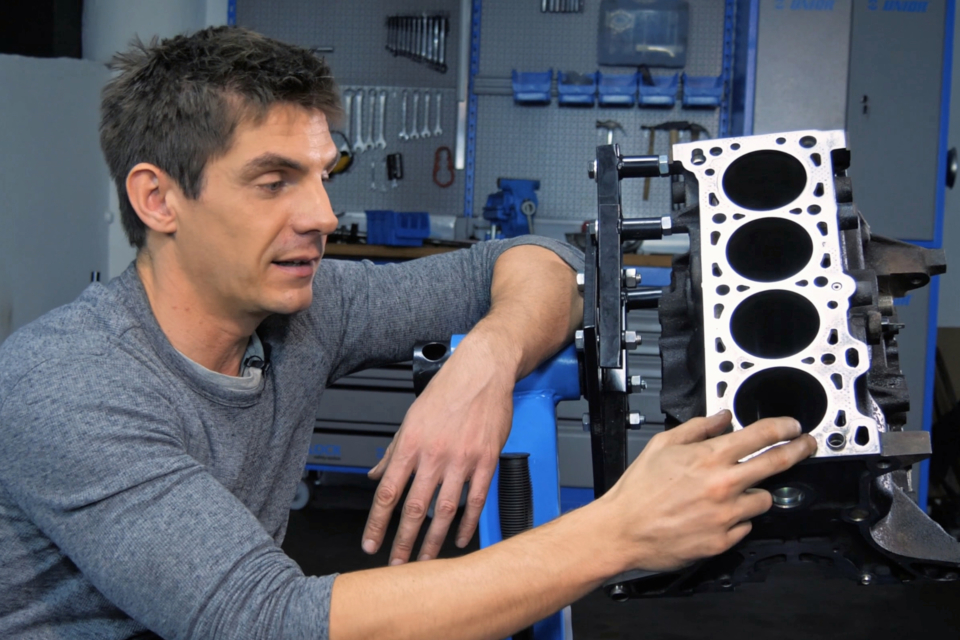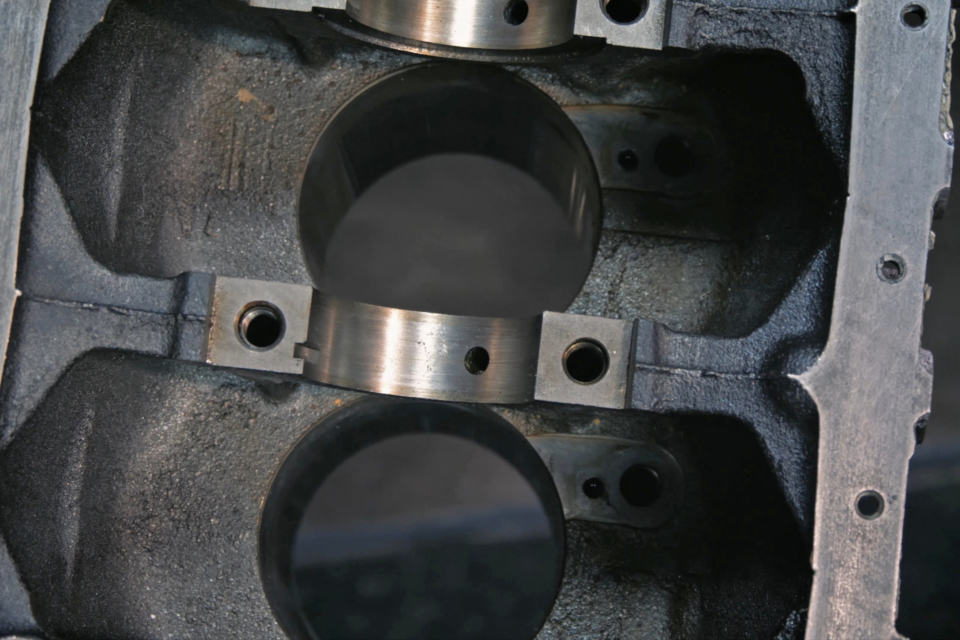If you are a reader of EngineLabs, you are probably more advanced in your engine knowledge than the average person. However being advanced only means that you’ve mastered the basics. When it comes to knowledge, it’s never permanent, so it never hurts to brush up on the basics, right?
This particular video is almost 18 minutes long, and Alex from How a Car Works starts out with the very basics. Using a 1.8-liter Mazda Miata engine block as a demonstration tool, a brief summary of the nomenclature, what an engine block is made of, what its job is, and what the oil and water passages do is followed by more focused, in-depth discussion.

Alex discusses the what, why, and how of the various features built into your average engine block, from the deck, to the cylinder walls, down to the main caps.
Construction
The history of the construction of engine block is covered, starting with the original configurations that utilized individual components for each cylinder and a maze of brass and steel pipes that could be considered very “steampunk” these days. Once mass production came on the scene, casting a single unit that incorporated all of the requisite bores, passages, and galleries for an engine made more sense, and the cast-iron engine block became the norm.
In the past few decades, cast aluminum has become increasingly popular for production engines. Their lighter weight helped manufacturers increase both performance and fuel efficiency numbers of the vehicles in which they are used, but one downfall is that they are slightly more complex to manufacture. Aluminum blocks require steel cylinder liners or some sort of cylinder coating like Plasma Transferred Wire Arc (Ford’s technology which you can see here), since aluminum isn’t up to the task of holding combustion temperatures and pressures or the wear in the bore which can be caused by the piston.
Surface Finishes
The required finish of a cylinder for optimal performance is discussed and explained in an easy-to-understand manner. During the section covering the tradeoffs of a perfectly smooth cylinder—which would minimize friction—versus a roughened surface which will retain engine oil, Alex does a great job of explaining the crosshatch finish on a fresh cylinder wall and how it balances the two factors.
Next the deck surface is discussed. While this portion of the video is extremely general in its description of required surface finishes for the head gasket and cylinder head to properly seal, we have to remember that this video is an overview of the basics.
The Peanut Gallery
Possibly one of the most valuable things explained in the video, is one that a lot of people aren’t nearly as well-versed in as they think they are; the oil passages in the block, why they are there, and how they work to ensure the engine has a constant supply of fresh oil to lubricate and cool it during operation.
Alex provides an extremely informative explanation of path the oil takes throughout the block, and why it follows the path it does. While he is demonstrating it on a four-cylinder block, the general theory and principles are valid across the spectrum of automotive engines. He even covers the oil sprayers found in this particular engine and how they improve the longevity of the parts within the engine.

Discussing the oiling system, Alex goes from the oil pump, and follows the path of the oil throughout the block, explaining how and why it goes where it does, with the added benefit of discussing piston-cooling oil jets, which the Mazda engine happens to come with from the factory.
Freeze Plugs
He also does a great job of explaining freeze plugs, even if he uses a slightly different terminology. They are not actually designed to keep your block from cracking if your engine coolant freezes, Alex offers. Rather he contends that the holes that the freeze plugs seal are simply the result of the block’s manufacturing processes and were dubbed “freeze plugs” by someone with a marketing background. There is also a decent discussion regarding coolant passages, and why they are routed the way they are within the block.
Like we said in the beginning, this video really doesn’t dive deep into any one particular feature of one particular model of engine block, but does an amazing job of giving a solid overview of what can be one of the most deceptively simple—and least-thought about—parts of your engine.

















